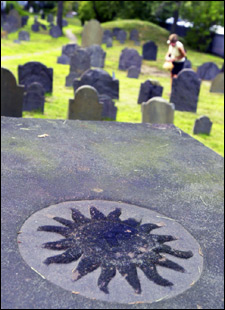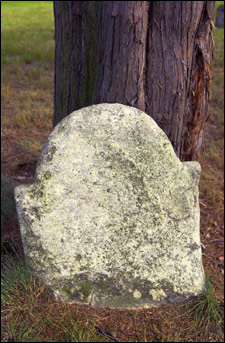‘Grim charm’
Burying Ground is architectural microcosm

Staff photos and text Jon Chase
Established even earlier than the venerable University across the street, the Old Burying Ground in Harvard Square, though beaten and battered over the centuries, persists as one of the city’s most charming historic sites. The modest cemetery, located along Massachusetts Avenue and Garden Street between the First Parish and Christ churches and first fenced in 1635, holds the remains of nine Harvard presidents. Tutors and students as well rest in the church- and tree-cloistered space – the grave of a 14-year-old undergraduate who died in 1747, Winslow Warren, is marked by the words “A Young Gentleman of Considerable Hopes.”
Photo gallery: Old Burying Ground
Another tragically young death refers to a larger historical context: “Beneath this tomb rests the remains of Mr. Jon Hughes, only son of Mr. John Hughes of Norwich in Connecticut. He died in his Country’s Cause July y 25th AD 1775 in Ye 21st Year of his Age.” Keeping young Mr. Hughes company are 14 Minutemen who died in April of the same year in the battles of Lexington and Concord that sparked the war of liberation. Two African-American veterans of that battle, Cato Steadman and Neptune Frost, are also residents of the Old Burying Ground.

In terms of architectural detail, the cemetery’s monuments prove a microcosm of the University itself. The medieval style of the original Harvard Hall, for instance, can be seen mirrored on many of the tombstones in their medieval death’s heads.
Bainbridge Bunting and Robert H. Nylander of the Cambridge Historical Commission have written that the “monuments illustrate, albeit with grim charm, changing styles in tombstone architecture from the late 17th to early 19th centuries, in much the same way buildings changed over the same period. The majority of the monuments consist of slate headstones with scalloped shoulders. The designs begin with death-heads of medieval origin, slowly adopt winged cherubs under the influence of the Renaissance, and finally turn into graceful Neo-Classic urn-and-willow memorial tablets.”




